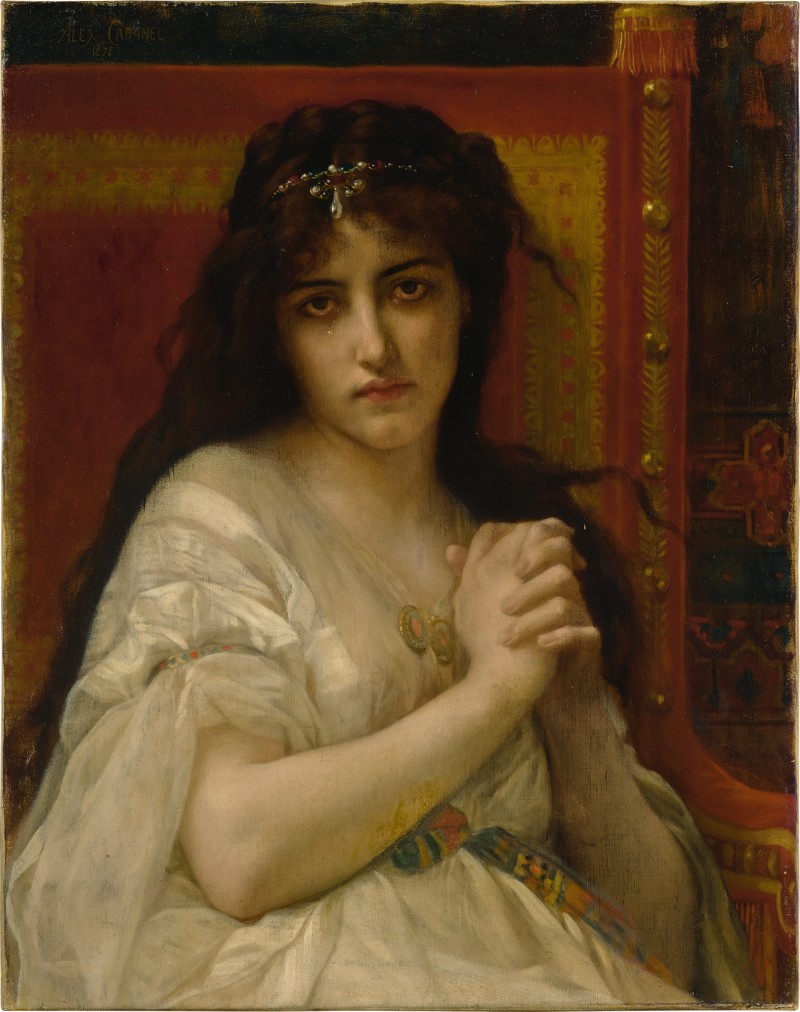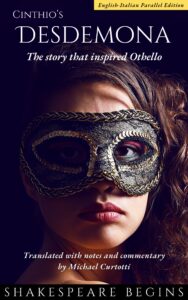
Othello and Desdemona: An Italian novella of murder and manipulation
Until you read the stories that Shakespeare read, it’s difficult to fully understand the plays he wrote. This is the tale of a particular story he read: the Italian novella which inspired Othello. Shakespeare adapted its plot to the stage, and like Romeo and Juliet, he made it world famous. To Shakespeare, Othello was the most important person in the tale. For the author of the novella however, Desdemona was the heart of the story. For the novella focusses on hatred of a woman. In Shakespeare’s hands the story became a play about the hatred of a man.
There is much that the two stories share in common. Most of the characters and much of the plot is the same. ‘Iago’ is the same manipulative schemer who brings doom on Othello and Desdemona. Othello is a leading captain in both; a Moor in a Venetian society. The mcguffin, the handkerchief, appears in both, and Iago uses it to dupe Othello. Venice’s leaders send Othello to Cyprus, where Iago’s plots come to fruition. Cassio is in both stories, and is wounded in both. Iago’s wife plays a role in revealing Iago’s plot, in both. The end is similar whether we read the Italian novella or watch the Shakespearean play (although there are important differences too).
But … pardon me, I haven’t told you yet who wrote the novella. Let me introduce the mercurial Cinthio. Cinthio wasn’t his real name. It was his nom de plume. He was born Giovanni Battista Giraldi, in the then independent Duchy of Ferrara, not far from Venice.
Cinthio is the source of two plots of Shakespeare plays, Othello, as we have just said, and Measure for Measure. In both those stories men do terrible things to the heroine. One is about the murder of a wife. The second is about the sexual exploitation of a sister concerned for her brother. These were only two of the hundred and more novellas Cinthio wrote. Yet Cinthio was a dramatist and a theorist of drama himself. He was a court poet and playwright and the Duke of the city put on performances of his plays. In all likelihood, they would have entertained English visitors from time to time. His works were certainly available in England in Shakespeare’s time.
So why is Cinthio’s Othello (Shakespeare invented the name) a novella about hatred of a woman? In a nutshell, Iago lusts for Desdemona. She barely notices he exists. He hates her so much for it to want to see her dead. In fact, Cinthio names only one character in his novella – Desdemona herself. That alone, tell us the story was about her. Cinthio’s story also begins with the marital bliss that Othello and Desdemona share. They are deeply in love before Iago’s poison destroys them.
In Shakespeare’s play, Iago is a little confused about why, but hates Othello, and only Othello. One reason is that Othello has overlooked him and promoted Cassio. Another is that he has heard a rumour that Othello has slept with his wife (he doesn’t even need to know if its true). Iago is clearly a racist, or someone prepared to use racist ideology for his own benefit, which is of course for practical purposes, the same thing. Shakespeare portrays this repulsive character well. Almost as a throwaway, Iago mentions that he is attracted to Desdemona as well. The long and short of it, is that the play, in Shakespeare’s hands, ends up being a story about racialised and malignant jealously of a superior officer. Whether the play itself is racist is heavily debated in the literature, but a topic for another time.
After all the story is about the murder of woman. If we focus on that, we ask different questions. Why was Desdemona murdered? As one scholar put it, she was killed for having sex with a man (or not). It doesn’t really matter which man. And Iago is not the only villain. Othello was duped, but he is also prepared to kill his wife, when he thinks she has slept with another. In that sense, in Cinthio’s tale both Othello and Iago have the same motivation. They both want control over Desdemona. Both are prepared to destroy her, when they think they don’t have it.
It would be nice to be able to say something lighter about the story, but it’s not that kind of story.
I mentioned that Shakespeare read the story … Wait, Shakespeare could read Italian? It appears the playwright could indeed read Italian, although we have no evidence as to when or how he learnt it. Firstly, there was no English translation of the story available at the time. Second, although a French translation did exist, certain words that Shakespeare uses, point to his reading the Italian text. The same thing occurs with Shakespeare Romeo and Juliet.
There is much more to say about Othello and its Italian source. More anon.
Notes
For convenience and clarity I have used Shakespeare’s character names, even though Cinthio doesn’t use those names, but rather titles and descriptions.
The scholar referred to above is Daileader, Celia R. Racism, misogyny, and the Othello myth: Inter-racial couples from Shakespeare to Spike Lee. Cambridge University Press, 2005.
Image
Alexandré Cabanel, Desdémone, 1871.






2 Comments
Michael Curtotti
Thanks Aaron, entirely agree (and had the same thought). The great masters didn’t start from a blank page! We have millennia of material to inspire us. It’s great to see how Shakespeare revs up the plot. Putting Iago on stage right at the beginning puts the audience right in the middle of the stakes of the story.
Aaron Lane
Fascinating read! It is interesting to hear the way in which Shakespeare was influenced by other writers while still making his works clearly his own. It is sort of inspiring to newbie writers (such as myself) to know that Shakespeare also took influence from other works and creations.